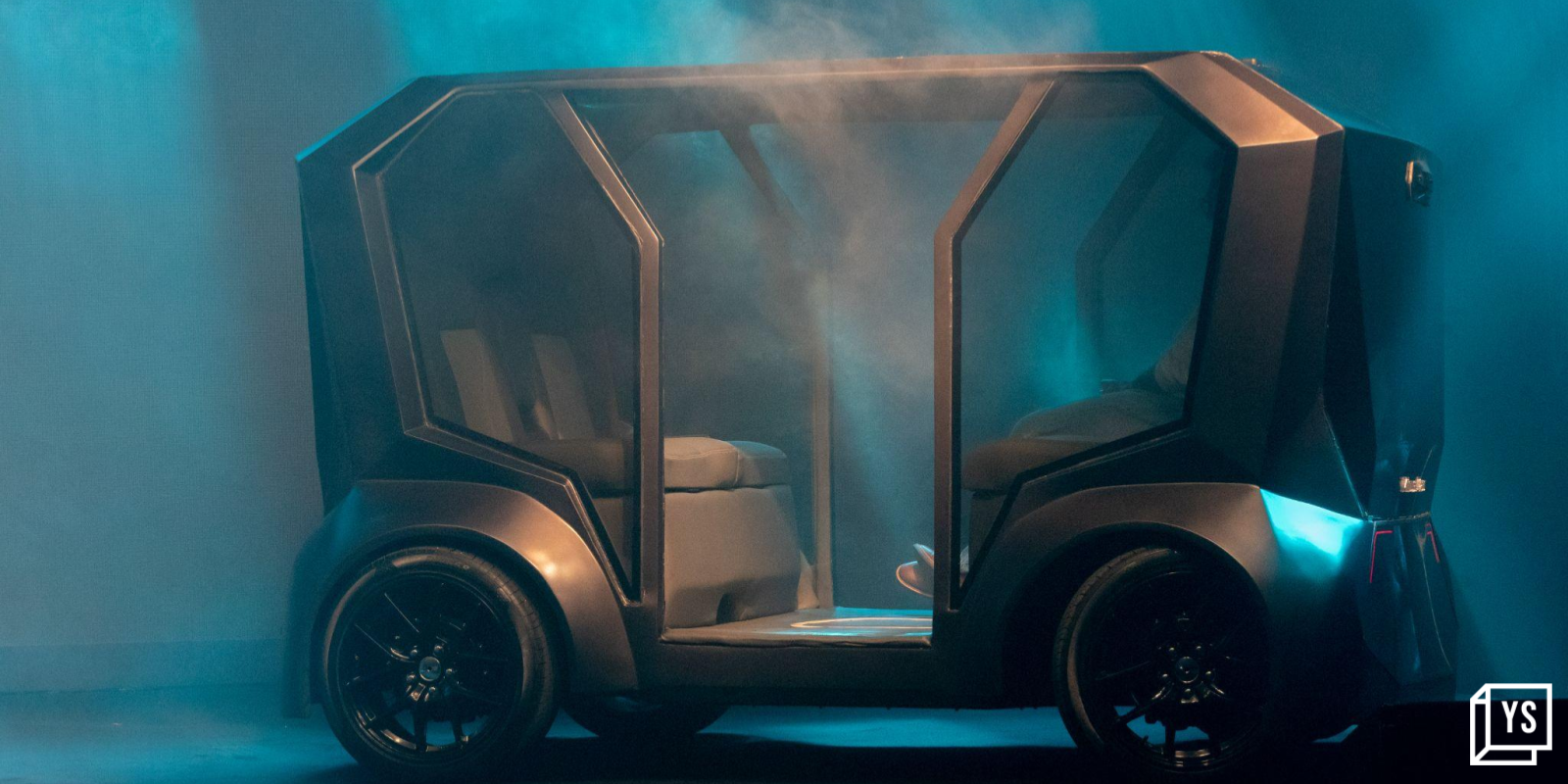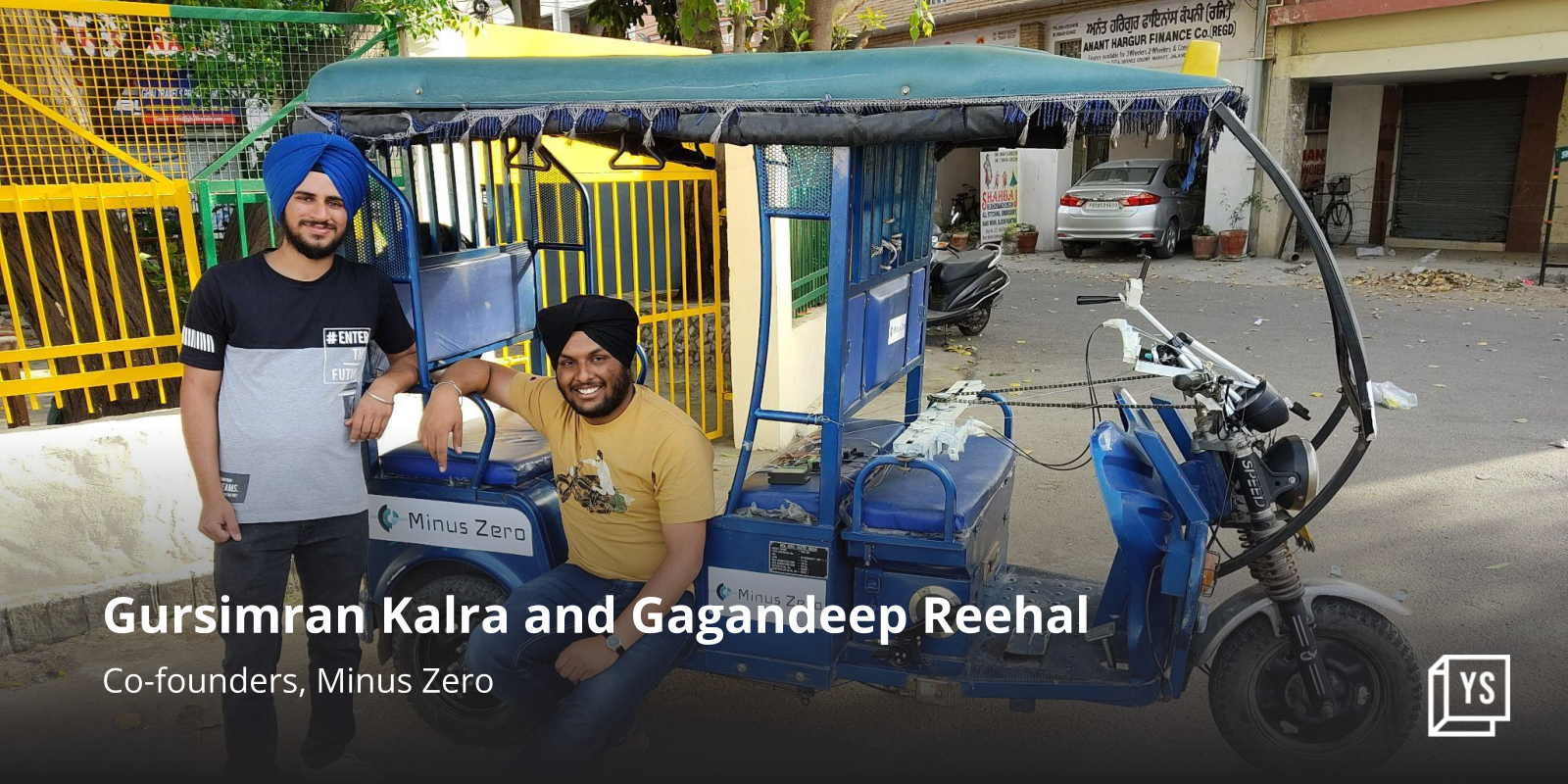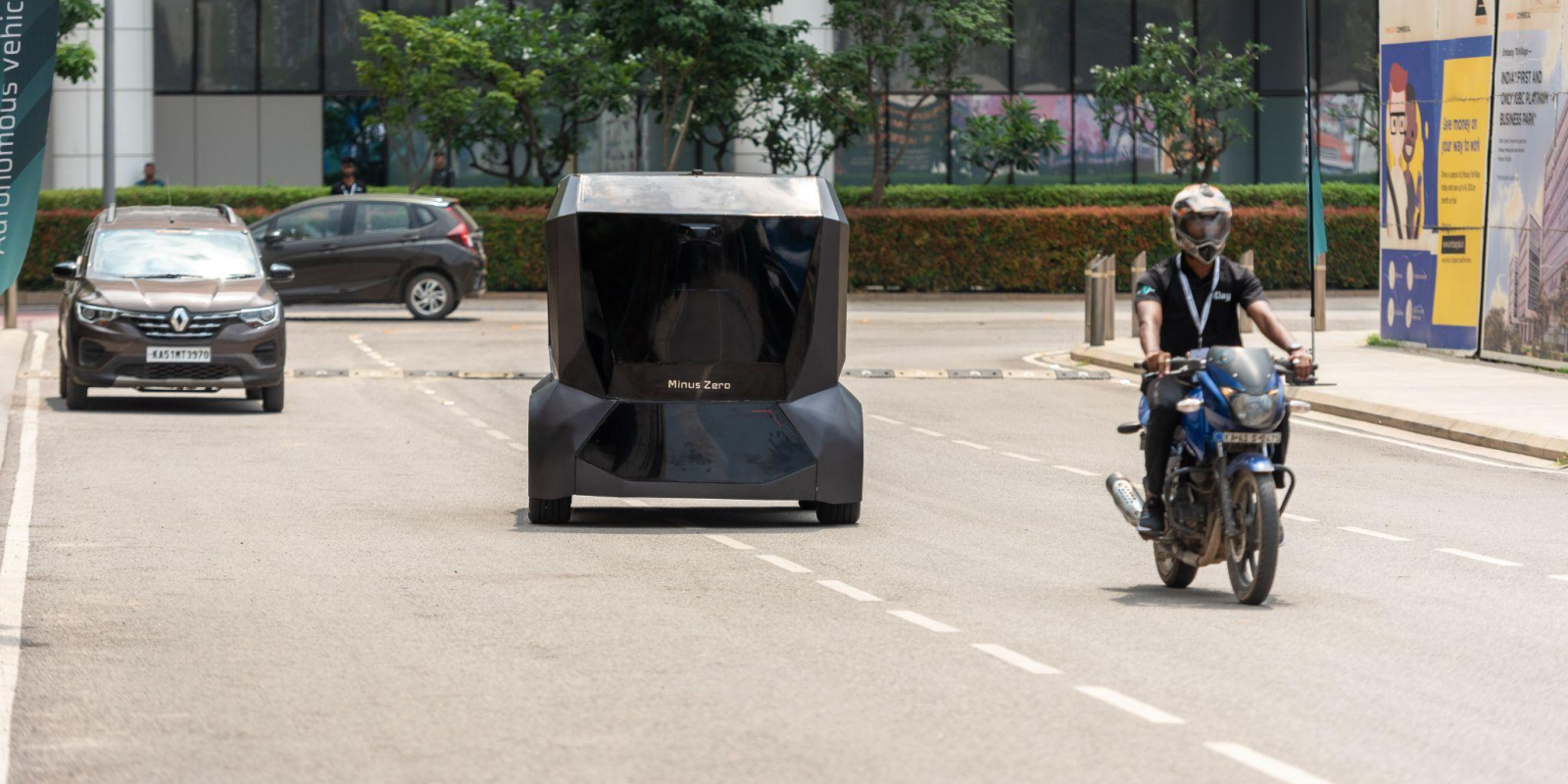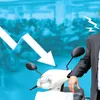
While autonomous mobility is touted as the next great leap forward in mobility—especially for shared mobility—it is a solution that has been riddled with seemingly neverending problems.
Intricate challenges encompassing safety, dynamic road navigation, anticipatory human behaviour prediction, complex traffic management, and other issues have significantly impeded widespread adoption and advancement of autonomous vehicles, even in the West where there’s some semblance of traffic laws.
But , an autonomous mobility startup based out of Bengaluru, believes it may have the answer to fixing these issues–a nature-inspired approach to artificial intelligence–even in a country like India where traffic laws are essentially treated as ‘suggestions’.
Minus Zero believes that by making AI more humanlike, it can push the limits and extent of autonomous vehicles (AVs).
“For AI to work for humans, it’s got to be able to think like a human,” says Gagandeep Reehal, CEO and Co-founder of Minus Zero.
The easiest way to understand nature-focused AI is by trying to comprehend how a human being would navigate traffic coming at them from all sides—a very common phenomenon in Bengaluru. AI inherently does not like unpredictability; the random chaos of vehicles moving at all possible angles, even more so. Still, people are able to navigate themselves out of the mess day in and day out.
“This cognitive approach of being able to take a decision based on the actions of multiple other variables [i.e., vehicles moving in different directions] is what we use at Minus Zero to train our AI models,” Reehal adds.
Nature-inspired AI
To train AI to become human, one needs to focus on three things: representation, prediction, and adaption, says Reehal.
His hypothesis for nature-inspired AI starts with the premise that the human brain, throughout its lifecycle, tends to focus more on the correlation between data points than storing the data itself.
For example, if you slip on a wet surface and hurt yourself, your brain will prioritise the understanding that water can cause slipping and potential harm, rather than memorise specific details of the incident, like the exact date, time, location, the type of liquid, or the attire worn at the time.
Inherently, artificial intelligence exhibits a proclivity towards storing information and data. But by training it to look for correlations, it can continually learn new behaviours, be it observing other drivers on the road or assessing its own actions.

.thumbnailWrapper
width:6.62rem !important;
.alsoReadTitleImage
min-width: 81px !important;
min-height: 81px !important;
.alsoReadMainTitleText
font-size: 14px !important;
line-height: 20px !important;
.alsoReadHeadText
font-size: 24px !important;
line-height: 20px !important;

These two behaviours: identifying correlations and effectively using them in similar scenarios, form part of Reehal’s ‘representation’ and ‘prediction’ thesis.
Next comes adaption, which he illustrates with the example of someone who used to drive a hatchback car and is now driving an SUV. The human brain doesn’t treat these two actions as unrelated or as something new because the basic principle of driving crossfade into each other. It learns to identify the new information it has to adapt to, for example, the SUV’s broader breadth or a softer clutch pedal.
In the context of AI, this could mean drawing from past experiences and recognising their influence on present and future applications.
“In our simulation testing using AI built on these three principles [of representation, prediction, and adaptation], we learned that our autonomous vehicles were able to outperform existing AI models and navigate real-world scenarios almost as well as a human did. In fact, where sometimes human beings would have made risky decisions, our AI made safer ones,” Reehal says.
He adds that once there are more AVs on the road, they will be able to signal each other and share vital information, including traffic conditions, road closures, and learnings from their own drives.
Minus Zero’s products use this nature-inspired AI to enable autonomous mobility and ensure the safe operation of its AVs.
Product and offerings
Minus Zero is a tech and software company that partners with manufacturers to create a fleet of AVs. Its product includes AI-powered software, which sits inside the vehicle on a computer, as well as dashcams and sensors that help the vehicle navigate.
The camera requirements are not too extensive as some of its Western counterparts, Reehal says, and a simple mobile phone camera would do too.
Reehal did not comment on what the average price of a two-wheeler or a four-wheeler AV would be. However, he did say that more than personal mobility, the startup was focused on shared mobility and commercial fleet operations—areas where redundancies and inefficiencies cost the country up to $20 billion in losses a year.

.thumbnailWrapper
width:6.62rem !important;
.alsoReadTitleImage
min-width: 81px !important;
min-height: 81px !important;
.alsoReadMainTitleText
font-size: 14px !important;
line-height: 20px !important;
.alsoReadHeadText
font-size: 24px !important;
line-height: 20px !important;

The startup has raised $1.7 million in funding from , , VM Financial Services, and Jaineo Avishk Singhi Capital Finance, among others. It is in the process of putting together another funding round.
It has plans to launch in India, but is open to manufacturing AVs wherever it gets demand from.
In an event last month, Minus Zero showcased its zPod , an all-terrain, all-weather condition vehicle that can be scaled to Level 5 autonomy—the highest a self-driving vehicle can have, without human intervention.
Minus Zero’s competitors include international players such as Google’s Waymo, Cruise, Aurora, , etc.
Edited by Megha Reddy






![Read more about the article [Funding alert] Raise Financial raises $22M in Series A round from BEENEXT, Mirae Asset Ventures, others](https://blog.digitalsevaa.com/wp-content/uploads/2022/01/Image1b3g-1632908602096-300x150.jpg)



